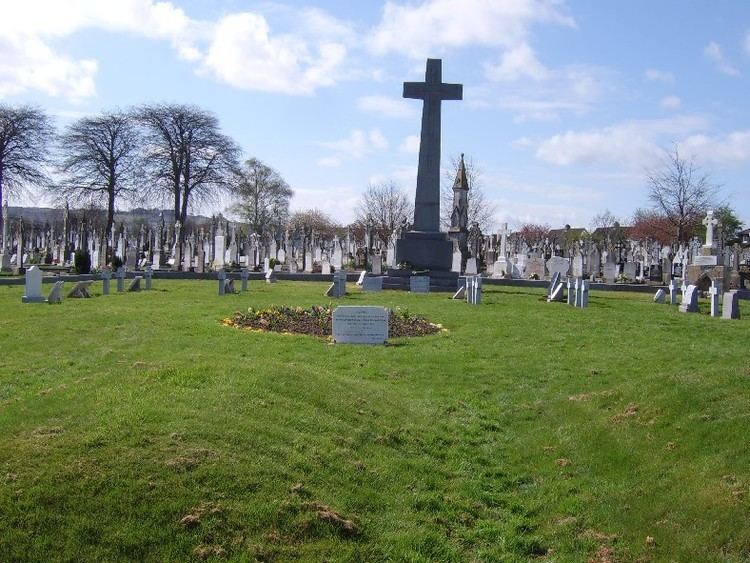Established 1860s | Style garden cemetery | |
 | ||
Address Glasheen Rd, Togher, Cork, Ireland Burials Terence MacSwiney, Tom Barry, Jack Lynch, Margaret Buckley, William Stockley, Charles Lynch, John Horgan Similar Red Abbey - Cork, Two Working Men, Cathedral of St Mary and St An, The Elysian, Saints Peter and Paul's Ch | ||
St. Finbarr's Cemetery (Irish: Reilig Naomh Fionn Barra) in Cork, Ireland, is the city's largest and one of the oldest cemeteries still in use. Located on the Glasheen Road, it was first opened in the 1860s. The entrance gateway was erected c. 1865 and the mortuary chapel consecrated in 1867.
Many of the early burials were of the wealthy citizens of the city. Unlike older cemeteries, St. Finbarr's was professionally laid out with numbered pathways and wide avenues.
Famous personalities
Among those buried at St. Finbarr's Cemetery are hurler and Taoiseach Jack Lynch; the sculptor Seamus Murphy, the antiquarian Richard Rolt Brash who was among the first to decipher writing in the ancient Ogham writing style; and Cork's first Lord Mayor Daniel Hegarty.
St. Finbarr's contains one of the largest burial plots of Irish Republicans who died in the course of the struggle for Irish freedom, most of them during the 1920s, but some of more recent vintage including members of the Provisional IRA and the Official IRA. This is known as the Cork Republican Plot and among those buried there are former Lords Mayor of Cork Terence McSwiney and Tomás Mac Curtain, hunger striker Joseph Murphy. Other republicans who are buried at St. Finbarr's but not in the Republican Plot include Flying Column leader Tom Barry, former government minister James J. Walsh and Dan "Sandow" O'Donovan.
Annual Easter Commemorations, remembering the 1916 Rising in Ireland are held at the Republican Plot on Easter Sunday by various groups and parties including Sinn Féin, Fianna Fáil, the Workers' Party of Ireland and Republican Sinn Féin.
The "musicians' corner" contains the graves of Aloys Fleischmann (Senior) and Aloys Fleischmann, and the composer Arnold Bax.
It also contains a mass grave where 72 women who died at St. Vincent's, Peacock Lane, a Magdalene Laundry, are buried.
